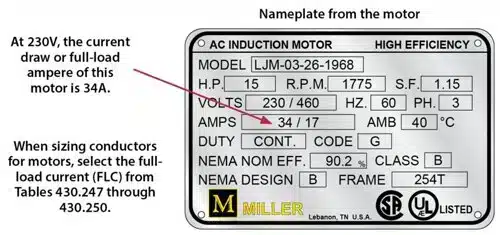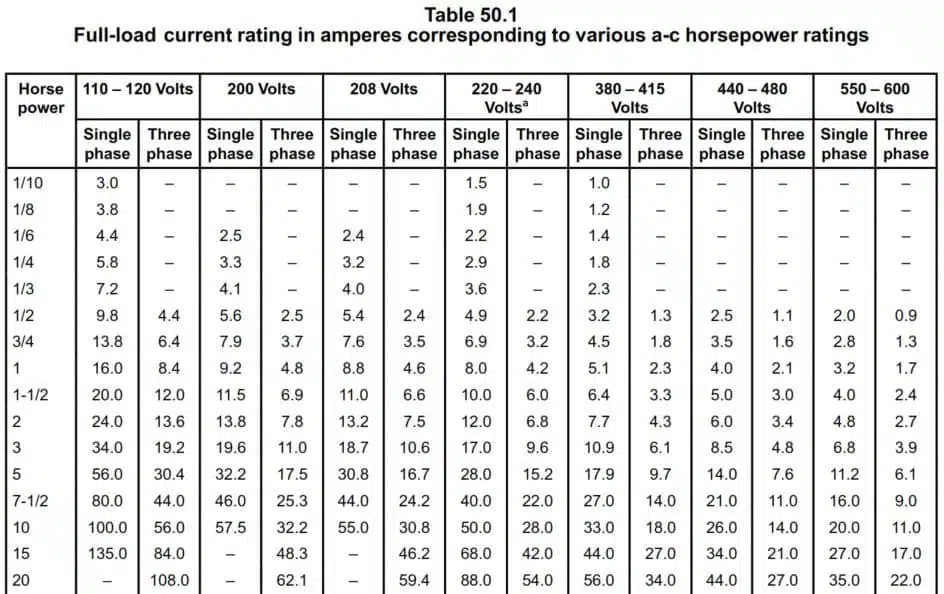Last edit: 31/12/2024

THE DOUBT:
In North America, each motor has two current values:
– Full-Load Ampere (FLA)
– Full-Load Current (FLC)
What are the differences and when are they used?
Full-Load Ampere (FLA)
DEFINITION:
The “FLA” is the rated current of the motor, the value that the IEC 60364 series of standards calls “Ib“.
Normally, this value is indicated directly onto the nameplate of the motor. The acronym “IN” is used in the IEC 60034 series of motor product standards.
In National Electrical Code (NEC), it is called the “Nameplate Value“.
USE:
The “FLA” value is used to regulate the overload protection of the motor (note that it must be fixed to maximum 115% of the FLA, in case of overload protection separated from short circuit protection).
Full-Load Current (FLC)

DEFINITION:
The "Full-Load Current" (FLC) is a standard value given in tables 50.1 (ac motors) and 50.2 (dc motors) of UL 508A standard (or from the tables 430.247, 430.248, 430.249 and 430.250 of the NEC).
It is a current value associated with the power (HP) of the motor: to each "Horse Power" value corresponds a FLC value.
Example: a 460-480 V three-phase motor has a nominal current (FLA) equal to 4,2 A (value declared by the manufacturer of the motor) and a "FLC" equal to 4,8 A (value given by the table 50.1 of UL 508A standard).
In the National Electrical Code (NEC), FLC is also called "Table Value".
USE:
The "FLC" value is used to determinate short-circuit protection, cable size and the size of the main disconnecting device of a control panel.
The "FLC" is not associated just to motors because UL 508A standard, at clause 52.1, requires that the FLC value of a control panel must be indicated onto its nameplate (once called FLA).
Notes
In the past, the UL 508A standard defined the FLC as "Full-Load Ampere Rating". But in the NFPA 79 standard, this value was called "Full-Load Current".
Since the term "Full-Load Ampere Rating" could be confused with the term "FLA" (but, in reality, instead it was meant FLC), GT Engineering, as a member of the UL 508A working group, proposed some modifications to the UL 508A standard, in order to align the use of the terms "FLA" and "FLC" to NEC and to the NFPA 79 standard.